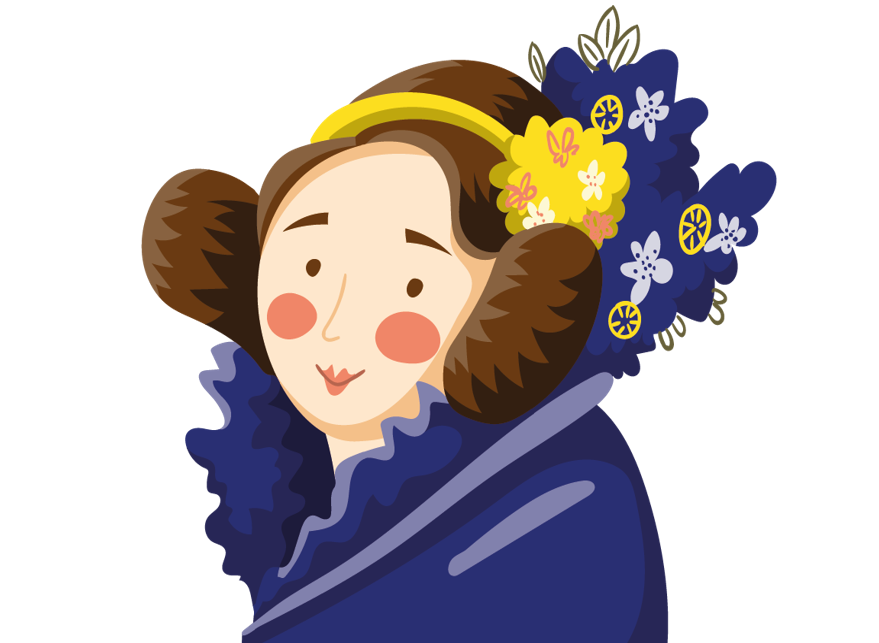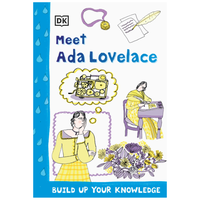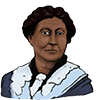Ada Lovelace Day - Biography, Facts & Classroom Activities
Oct. 2, 2025
Ada Lovelace Day celebrates the achievements of women in science, technology, engineering and maths (STEM). Held on the second Tuesday in October every year, in 2025 it is celebrated on the 14th of October. Read on for a short biography and facts about Ada Lovelace, perfect for a child's homework or school project.
Who was Ada Lovelace?
Ada Lovelace is considered by many to be the first ever person to write a computer program.
She was born in London on 10th December 1815, with the name Augusta Ada Byron. Her mother was Anne Isabella Milbanke, and her father was the famous poet, Lord Byron - although Ada did not know him as he moved away when she was just a few weeks old, and he sadly died when she was eight years old.
Ada did not go to school, but was educated at home by private tutors. She was very lucky and was taught science and maths - most girls were not taught these subjects at that time. From an early age, she showed a talent for numbers and languages.

When she was 17, Ada met an inventor and mathematician called Charles Babbage and the pair became friends. She then began to study advanced mathematics at university in London.
This was all long before computers were commonplace. Charles Babbage created a machine to perform mathematical calculations called the Difference Machine. Ada learned about computing when she made her own notes while translating a description of how it worked. In the notes she assed information about a way for the machine to repeat a set of instructions. This is a process known as looping, which is still used by computers today. For this reason, she is often considered to be the first computer programmer.
In 1835, Ada married William King and three years later they became the Count and Countess of Lovelace.
Ada died of cancer in London on 27th November 1852. She is buried in Nottingham, England.
For a more detailed story of Ada Lovelace's life, Purple Mash users can read Meet Ada Lovelace by DK Learning inside the platform.
Celebrating Ada Lovelace's Achievements
Ada has a computing language and several awards named after her. There have also been universities and educational buildings built in her name, as well as charitable initiatives. She was also featured in British Passports from 2015, along with Charles Babbage.
Each year, on the second Tuesday in October, Ada Lovelace Day is celebrated. It is a celebration, not only of her incredible achievements, but also the contribution that other women have made to the sciences in all fields. Schools an organisations around the world organise events to celebrate - find out more here.
Ada Lovelace Resources on Purple Mash
There’s plenty to explore in the Ada Lovelace Day area of Purple Mash.
Why not kick off with a slideshow about the life of the woman herself, highlighting her upbringing and how she came to be known as the first computer programmer? After that, children can reinforce their new found knowledge by creating an Ada Lovelace factfile before putting their learning to the test with the Ada Lovelace Day quiz. The quiz covers the achievement of a range of famous female scientists throughout history.
All of these resources, and so many more, are included as part of a subscription to Purple Mash. You can get a free trial to explore the platform below.
Ada Lovelace Project Ideas
Here are some more ideas for projects on Ada Lovelace for kids:
- Create a timeline of Ada's Life: Use the Meet Ada Lovelace DK Learning text for an example timeline and then create your own.
- Write a Fact File: Use the template on Purple Mash to create a fact file, using the information provided in this blog or on the writing template to guide you.
- Learn about Looping: Use 2Code to learn about looping, one of Ada's first ideas for computer programming.
- Write an email to Ada: Use 2Email and tell Ada about how computers and technology have changed since she was alive.
- Write Ada's Diary: Write a diary entry as if you were Ada, a female Victorian coder. What problems might you come up against? How could you describe what it felt like to imagine a machine that could 'think'?
- Ada Lovelace Podcast Episode: Write and record a podcast episode all about Ada Lovelace using 2Cast.
Women in Science
If you are exploring other famous women in science, there are several factfiles for children to complete in the Ada Lovelace Day area of Purple Mash. Their achievements span the sciences, from the radioactive research of Marie Curie and the prehistoric discoveries of Mary Anning to the astronomical work of Maggie Aderin-Pocock and trailblazing astronaut Helen Sharman.
There are also folders full of activities about both Florence Nightingale and Mary Seacole. In them you’ll find slideshows, quizzes, animations and a lot more.

